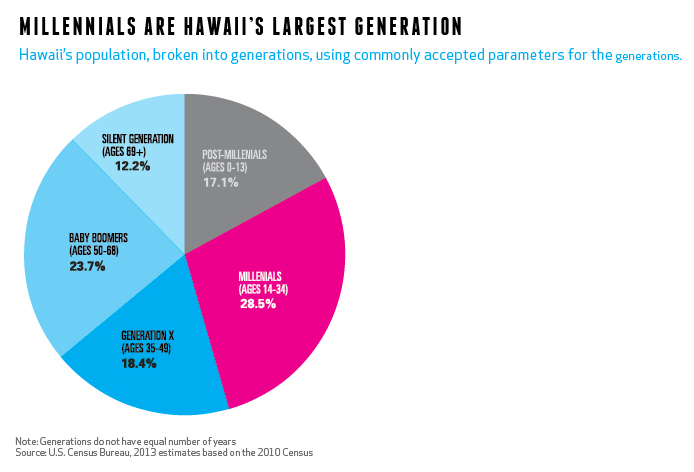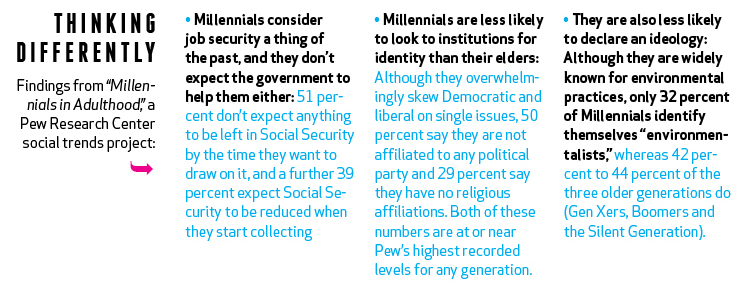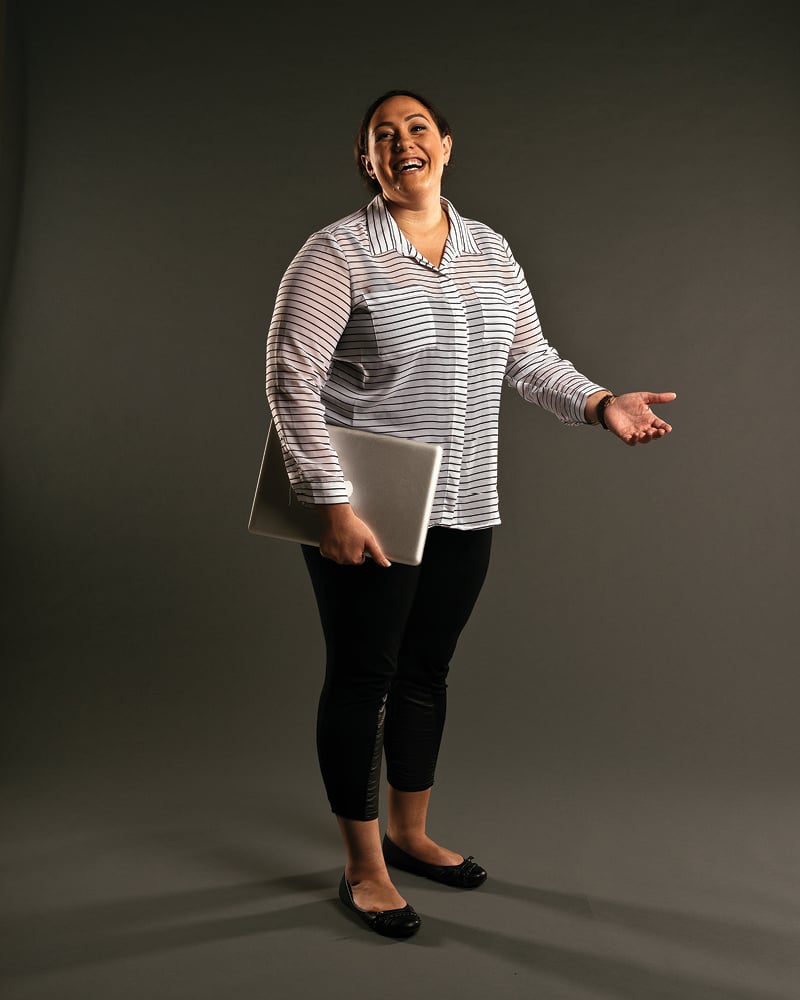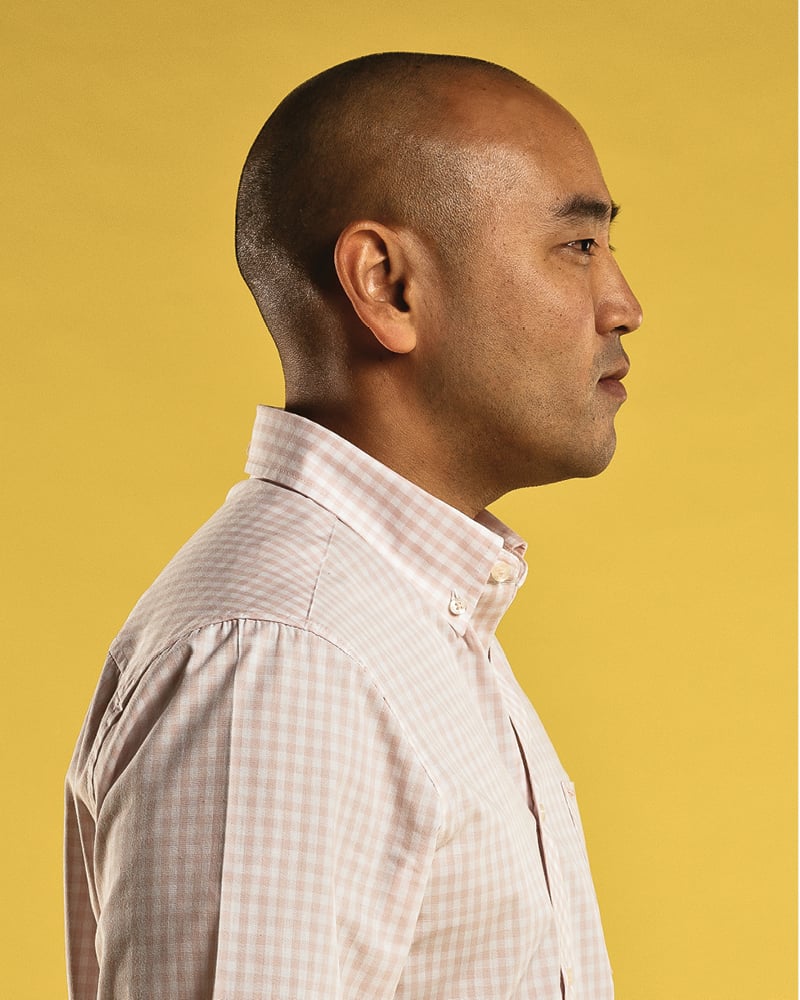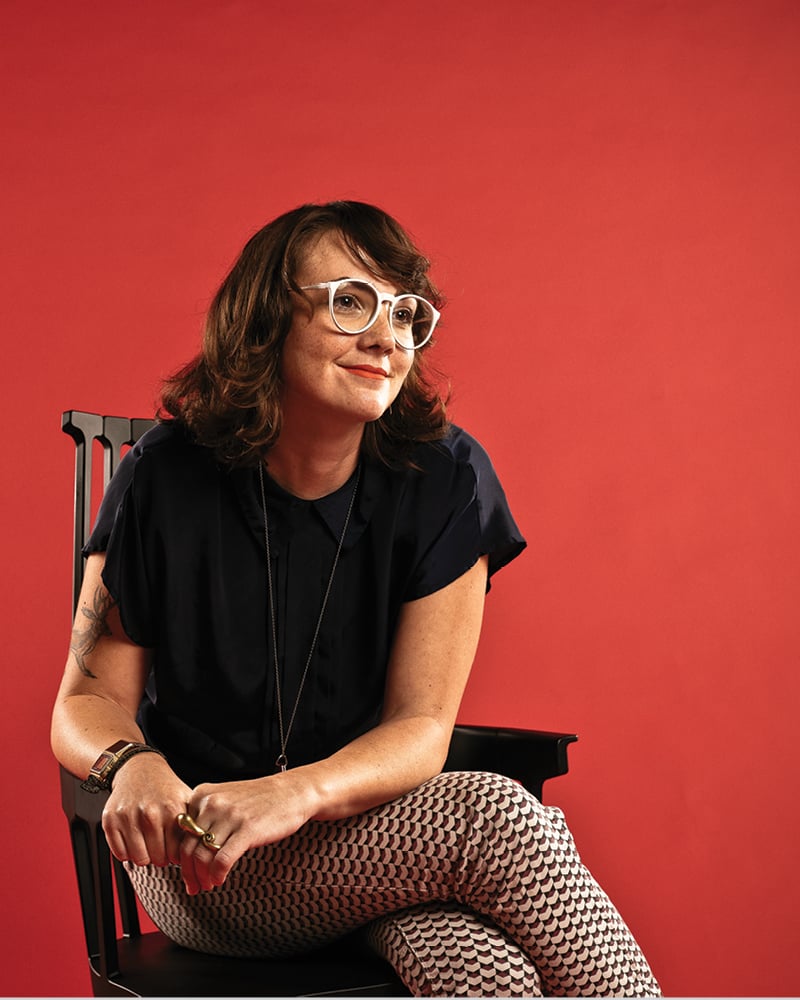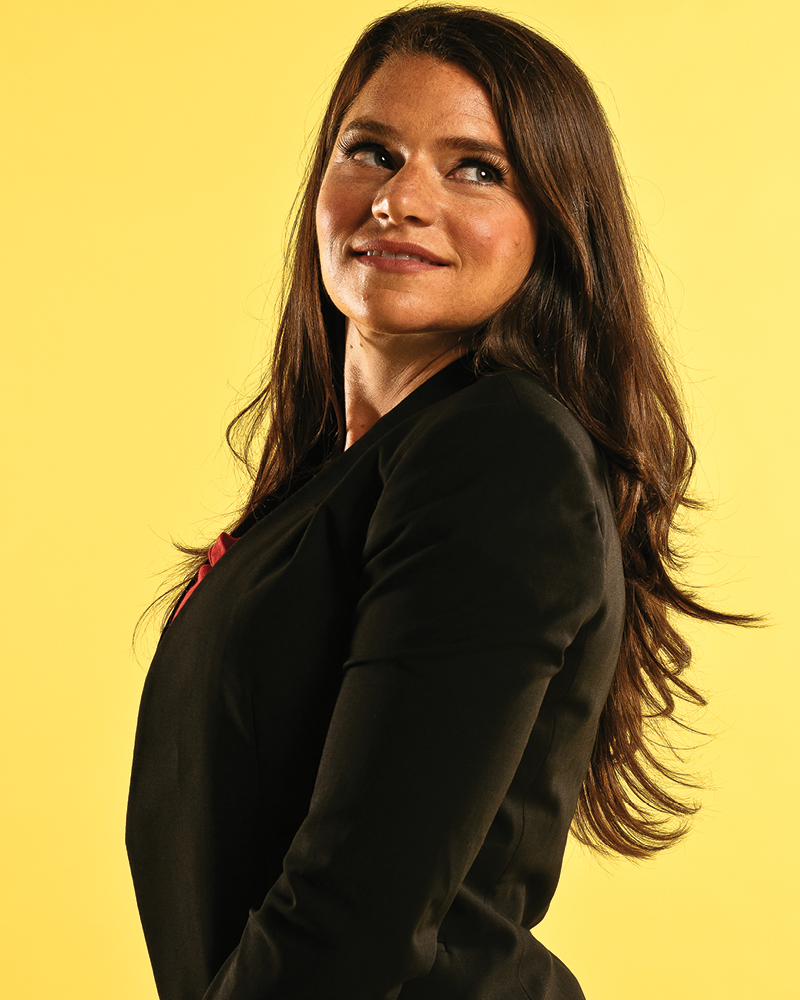Boomers Changed the World. Now, It’s Millennials’ Turn
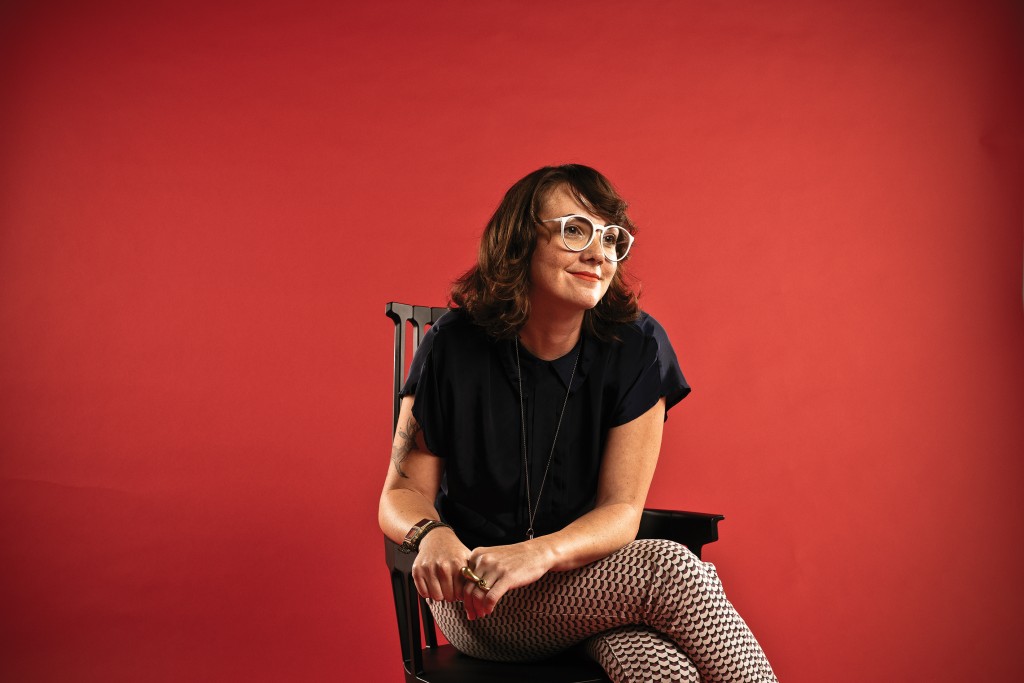
In the 24/7 global marketplace, where the game changes overnight and social media amplifies your message and your mistakes, here come the Millennials, the generation raised to thrive in this world.
Just about everyone has strong feelings about Millennials. The generation born roughly between 1980 and 2000, whose oldest members will turn 35 this year, has been derided as “The Slackoisie” – young people who feel entitled to an interesting job or good pay without really working for them.
Hawaii managers have their opinions: “They always think they know better.” “They only want to work when they want to work.” “They need so much hand holding. Can’t they just figure it out?”
Feelings also ran high at Hawaii Businesss Wahine Forum in October, when panelist Ashley Lukens, 33, told a packed ballroom that her office hours were from 10 to 4 and that she zealously guards her daily yoga hour. Lukens, a program director for the Hawaii Center for Food Safety, then cheerfully pointed out to the audience that her generation was going to be running Hawaii’s companies in the not-too-distant future. It seemed everyone in the audience had a powerful reaction, with Millennials leaning forward in their seats and nodding, and people in other generations leaning back with their arms crossed and eyebrows raised. Afterward, the post-panel buzz included sarcasm: “Must be nice to be her,” and “Wonder how long that’s going to last?”
Millennials are 74 million strong, a generation almost as large as the Boomers, so it’s likely that they will get their way – just as Boomers did – and their influence will last a long time. An Ernst & Young report predicts that by 2020, nearly half (46 percent) of America’s workforce will be Millennials. They are already changing workplaces in Hawaii and around the nation.
“Millennials aren’t better or worse, they’re just different,” says Courtney Templin, COO of JB Training Solutions, a national consulting organization specializing in the challenges of the intergenerational workplace. “Boomers and Xers tend to see Millennials as entitled, lazy and narcissistic, but much of this tension comes from how each generation was raised and the world in which they grew up.”
When Millennials were being born, there were so many of them they were called the Echo Boom. They grew up in a world that was globalizing and digitizing at an unprecedented pace, marked by cataclysmic events such as 9/11 and the worst recession since the Great Depression. They are simultaneously the most educated American generation to date and the generation with the most student debt (college costs have skyrocketed 538 percent since 1985, while the Consumer Price Index rose only 121 percent). The Pew Research Center says Millennials are also the first generation in the modern era to have lower levels of wealth and personal income than their two immediate predecessor generations had at the same stage of their life cycles.
The other great divide between Millennials and their forebears is technology. As the first generation that came of age with smartphone in hand, Millennials “understand technology as an extension of personal identity,” says Lindsey Gibson, an assistant professor of organizational management at Hawaii Pacific University. “The main way they communicate with each other is through technology.”
Millennials are less loyal than their predecessors to institutions and ideologies, and they have a vision of themselves as individuals embedded in personal networks: mobile, nimble, constantly connected and always evolving. They assume the job they have today will look completely different in 15 years. They also know that no one can truly keep up with a 24/7 global marketplace, and they’re OK with that.
Here are eight qualities that set Millennials apart, both at work and in life (with the caveat that non-Millennials can have these qualities, too).
1. They Expect a Dizzying Rate of Change.
“I feel like everything’s changing so rapidly that we just have to take whatever comes,” says Piikea Kalakau, 23. “This world is a lot more fast paced than what our parents were used to. Technology, everything, changes on a daily basis, and you just have to adjust. I embrace it.” She sure does: When we interviewed her, Kalakau was a paralegal with Leu, Okuda & Doi, but, when we contacted her to confirm her job title prior to publication, she said she’d joined state Sen. Josh Green’s office as a legislative assistant.
“Everybody has accepted there’s no constancy in the workplace. But I think where the difference is, is in the speed” of change expected by Millennials, says Karen Street, VP of organizational development at First Insurance Co. of Hawaii.
Millennials assume they will constantly be presented with fluid, unprecedented circumstances and asked to come up with solutions that work – and they feel up to the task, says Street, who has two Millennial children. “They’re the generation of the can-do attitude. They’re the ones that say, ‘I can do anything.’ ”
2. They’re all about the product, not the process
It can be hard when your company has workflows and processes, but Millennials are less attached to the “how” than to the “what.” That’s in line with the Silicon-Valley, design-thinking ethos that Generation X invented and Millennials perfected: Gather information, set a goal, make a plan, execute it, get feedback about whether it worked – then repeat ad infinitum until you have something that works.
Lukens says this product-over-process approach helps her find effective solutions that work for the statewide communities she serves with programs such as the Center for Food Safety’s monthly educational seminars. Lukens says the seminars started with a general goal, connecting people and meeting their needs, and then didn’t stop iterating until the team came to a solution. They tried conference calls, which felt “really disconnected, whereas the whole point was to foster connection,” then moved to webinars and finally reincorporated a spinoff conference call for more in-depth connection.
“We changed every month and improved every month,” says Lukens, pointing out that if she had simply given her staff a set process – such as stage a monthly webinar or conference call – “We might have had two people (show up). And then I would have had to tell my funders, who have asked me to build capacity and communities, ‘Oh, we’ve only gotten two people to sign up.’ That won’t happen if you’re constantly modularizing what you want to do, and how you want to do it.”
Millennials consider the “how” to be their domain, says Street. “They want direction, but not step by step how to do it, because then it’s not interesting.”
3. They hate waste
Millennials (especially Millennials in an island state) have grown up with the idea that resources are limited – whether the resources are time, money, attention, people or things – and they pride themselves on making the most of the resources available. Some major Millennial contributions to the American economy have been based on that assumption, including all facets of the sharing economy, which seeks not to grow the pie but to allocate existing capacity more efficiently.
The no-waste philosophy is also how Millennials live their lives, says Susan Shaheen, a scholar of the transport sector of the sharing economy who is based at the University of California at Berkeley. “They want to multitask,” she says. “That even includes riding a bike: I’m getting exercise while I’m traveling. Or, if I’m on a train or a bus, I’m getting work done. It’s maximizing the use of the time they’re in travel, as opposed to basically having to hold on to a steering wheel and look at the road.”
That time- and labor-efficient attitude affects their approach to work, says Tyler Kimura, 33, the youngest partner at locally owned accounting firm PKF Pacific Hawaii. “It’s all about efficiency. People don’t want to be spinning their wheels.” If there’s a more efficient way of doing things, particularly where technology is involved, Millennials will seek it and propose it.
Managers at institutions with set processes can find this attitude disconcerting, whereas Millennials can get frustrated if they work where the processes don’t incorporate the latest technology. Contrary to popular belief, says Street, “Millennials are not lazy. But, in order to leverage them, we need to free up some time so they can spend their time doing work they view as more engaging.”
When a process gets streamlined, or a goal is met, Millennials feel it’s time to fulfill another priority. “I think the hallmark of effective time management is when you get everything done and still have time to go to the beach,” says Adele Balderston, 29, marketing and outreach coordinator for the UH Economic Research Organization (UHERO). She’s not really joking. Millennials know that no one is going to safeguard their personal time if they don’t, and they’re much more willing to do it. In fact, says preschool educator Vanessa John, 28, time is the baseline currency for Millennials. “Time is more valuable to us, in a way, than money. You can’t buy time.”
4. They value feedback in real time.
Say goodbye to the annual performance review. Whereas a traditional employee in Hawaii might get (and dread) a yearly review, “a Millennial prefers five to 10 evaluations a year,” says Lukens. Preferably more than that, she continues, since the Millennial brain “has been formatted for constant live-feedback data analysis. They’re always seeing the metadata simultaneously with the data.”
That’s the Silicon Valley approach at work again, which can create a resilient and responsive momentum. As Lukens says, “The whole ethos of the Millennial generation is fail forward. Get on the bike and keep riding it.” Note that feedback is essential to this loop. Without it, the momentum stops cold – and that’s the key to another complaint about Millennials, that they need too much hand holding.
“I’ve heard that stereotype of needing feedback,” says PKF’s Kimura, but he has a different take. “I don’t think it’s so much they need constant reassurance that they’re great. I think they want to know if they’re on the right track. If they do something wrong, they don’t want to hear about it 10 months later.” If they get feedback in real time, says Kimura, “they can fix it and have a conversation about it. Don’t just push it under the rug and bring it up at evaluation time. I think (Millennials) want the opportunity to prove that they can improve.”
Take note: This also means that, when they give feedback to you, they’re not trying to make you look bad. They want to help you reach your goals.
5. They want freedom with discipline.
The product-over-process approach has ramifications for Millennials’ work style, too. “Previous generations don’t always understand that individuals from this generation actually work, using a different method to accomplish it,” says HPU’s Gibson. “Give them a deadline and they will reach it, but they would prefer to choose when and how the work gets done.” Translation: Millennials value work hours and work locations that can flex around other life commitments. This isn’t just a one-way flexibility, either; Millennials assume that, when necessary, work will bleed into personal time as well.
But that doesn’t mean Millennials want a totally unstructured workplace, says Lukens. She tells her employees, “In order to have freedom, you have to agree to some key rules. I don’t care where you work, as long as you never miss a deadline. I don’t care what you work on, as long as you’re meeting the primary goals of your position. I’m all about giving people freedom within really clear expectations, with transparency and accountability throughout.”
Clear and complete communication about what you need and what the rules are is vital to Millennials, agrees Street: “They really like to have clarity. They want to understand expectations so they can meet them.”
6. They’re growing their brand and looking to grow
Millennials have come of age in a constantly evolving job market where rounds of layoffs are part of business as usual. Kalakau, the paralegal who became a legislative assistant, says Millennials often unfairly get flak for perceived job-hopping. “I think we can’t expect to hold a job for a long time, but it is expected of us, at the same time.” In addition, many industries are relying more and more on contract work, says Ray Lam, a telecommunications engineer who has seen that dynamic at work in his own industry. “A lot of companies, they won’t hire you (as an employee). You’ll be hired as a contractor for a year and, if they like you, they’ll extend you for another year. At the end of every year, you’ve got to worry.”
In response, and with the aid of technology, workers have become their own portable brands. Social networks have given Millennials years of practice in carefully constructing their public selves. Professional platforms such as LinkedIn, where you can post and update your resume, professional goals and recommendations from others, have extended those public selves to the working world.
Millennials have also embraced a grow-or-die mentality. “If you’re not 10 steps ahead, you’re behind,” agrees Kalakau. It can be a boon to have employees who constantly strive to get better at their jobs, but these employees can be hard to retain. Kimura says he thinks Millennials “want to keep learning, and the best way to learn is to get put into different environments. To learn a different industry or a different process of how to do things, getting different vantage points. That’s what drives people to move. (They’re) looking for, ‘How do I grow as a professional?’ ”
Kimura says his company, PKF, responds by keeping the lines of communication wide open and making it clear that it’s interested in employees’ professional development: “We have constant conversations with (employees) about, ‘What are you looking to do? What kind of jobs or engagements do you want to try to work on? What kind of training do you want? What kind of additional certifications do you want?’ And we build that into our entire business model.”
That approach has benefits for employees and for the company. “Hiring a new employee is expensive,” says Kimura, “and even on the client side, they want the same team working year to year” for maximum efficiency and continuity.
7. They don’t take it personally.
Hawaii has historically been a thin-skinned place, where public disagreement, particularly about important issues, can be considered aggressive and antagonistic. That’s all changing, says Street, who says she sees her Millennial son and his colleagues doing it differently. “They have different opinions, and they can argue, but when it’s all over, they’re still friends. It’s not a personal issue when they disagree and I think that’s a difference” between generations, she says.
The Millennial ability to forge working relationships with people who hold different opinions is already affecting Hawaii’s political scene, where Republican state Rep. Beth Fukumoto, 31, was a driving force behind the creation of Hawaii Future Caucus, a bipartisan group of elected state and county officials. Hawaii Future Caucus focuses on issues important to Millennials, such as government transparency.
The nation is taking notice. In 2013, the influential political website The Daily Beast named Fukumoto one of “Nine Women Remaking the Right,” and, in 2014, she was one of the Washington Post’s political blog The Fix’s top 40 rising political stars under 40 years old.
Fukumoto calls the Millennial generation “much more pragmatic and less tied to party identity or a particular philosophy” than its predecessor generations. “That makes it easier for Millennials to take politics less personally,” she says, “and work productively with people they may disagree with.”
8. They want balance, and to make a difference
At the end of the day, Millennials want to know they are making a meaningful contribution – that, as Kimura says, they aren’t just “spinning their wheels,” either at work or in life. Millennials continually step back to review, gather data and analyze, and they can no longer rely on what John calls the “set path” her parents and grandparents trod. Even as job security has evaporated, work options have proliferated, says Kalakau. “You can be any person you want to be nowadays. It’s a huge task to take on: ‘What do I want to do?’”
Hawaii Millennials we spoke to across the employment spectrum agreed that a primary driver of their career choices was “balance,” a word that gets more lip service in the workplace than reality. PKF’s Kimura cites balance as the reason Millennials crave efficiency and flexibility. “There are so many things to do,” he says. “How do you squeeze what you really value into the time that you have? Spend time with your kids, coaching their games? Can you take work home? Work on it late? The ability to do that, I think, plays a lot into what they’re looking for” in a job. Kimura should know: He has a 4-year-old son and says his top personal priority is making sure he’s a meaningful part of his son’s childhood, and “not just a paycheck.”
The balancing of multiple priorities can mean that a sideways move is a smart one for a Millennial. That reality, along with the higher value placed on diverse experience, has led to what Templin, of JB Training Solutions, calls the replacement of the career ladder with the “career lattice or career scaffold, where you can take steps up, down, out or across to create a meaningful career” that’s uniquely yours.
Millennials have been shaped by our complex, interconnected and fast-changing surroundings, whether in Hawaii or beyond. Working well with Millennials can help businesses unlock the power of technology, engage new audiences and customers, and become (or remain) nimble enough to thrive in a business environment where disruption seems to be the only constant.
First Insurance’s Street sums it up well: “It’s for us as leaders to understand that it’s not that Millennials need to be like Boomers, or Boomers need to be more like Millennials. It’s how do you harvest and blend them? They can be complementary, but there’s a shift that has to happen.”
Millennials in the Workplace:
The Interdisciplinarian:
Adele Balderston, 29
Photographer. Writer. New-media producer. GIS and data specialist. Social-media maven. Scholar.
Adele Balderston has curated art shows, produced and promoted new-media events, written for, photographed for and interned at countless publications, waited tables, tended bar and staffed the receptionist’s desk at the Versace showroom in New York City. She is now bringing all that experience to bear on her new role: marketing and communications director at the UH Economic Research Organization, where she runs UHERO’s social-media presence and strives to “make policy public” by helping to create online “dashboards” of easily interpretable data that are accessible not just to policymakers and researchers but to the general public. It’s a job description that didn’t exist a few years ago.
Balderston says that, until recently, her eclectic skills background, bouncing among print, photography, art, academia and new media, was seen as a liability, a “lack of focus.” But, in today’s environment, she says, a diversity of experience is a strength for her and those she works with: “At UHERO, we take a lot of data from a lot of different elements. It’s easier to work with people who have an interdisciplinary background because they’re more able to see the big picture – whereas people who are pigeonholed in one field, it’s harder for them to be innovative, because they’re only looking at the problem through one lens.”
Employees with broad, unique experience portfolios are becoming increasingly valuable to companies, because businesses are faced with increasingly unpredictable challenges. “We’re hiring people with diverse backgrounds,” says Tyler Kimura, of accounting and consulting firm PKF Pacific Hawaii. “We’re not just looking for the typical accounting student. We have a finance analyst who was at Deutsche Bank out in Singapore. We have a Ph.D. in chemistry who was doing process improvement out in Japan. (PKF is) bringing in smart people who have seen a lot of different things.”
Karen Street, VP of organizational development at First Insurance Co. of Hawaii, says Millennials’ tendency not to specialize can be a challenge to businesses with traditional hiring practices. “Employers are having to change their mindset about how they recruit,” she says. Street acknowledges that it will be a “shift for our managers” to hire people for their cultural fit and broad competencies rather than for their years-long experience with a narrow or technical skill set.
Millennials in the Workplace:
PKF Pacific Hawaii
Tyler Kimura, 33
PKF is among the established companies in Hawaii that are making their workplaces more Millennial by moving toward a product, not process, mentality. Within the past year, “We really implemented a new (workplace) culture,” says Tyler Kimura, 33, the firm’s youngest partner.
Among the changes: an official open-door policy that answers to Millennials’ need for quick feedback. “Now you can just talk to anybody about anything,” Kimura says, agreeing that traditional lines of hierarchy are blurring.
PKF has also streamlined a long-standing billable-hours policy, which Kimura says clashed internally with the practice of charging clients per job and created “a lot of extra data, as well as confusion and frustration for the staff.” Now, says Kimura, it’s “just get the job done. We’re trying to provide value and good service to our clients. Let’s focus on that, and not worry so much about whether one associate charged 38 hours a week, or 40. What matters is the ultimate end product we’re trying to provide.” The change, he says, is about “creating an environment of ‘Let’s not do things just to do them.’”
Another change: “We got rid of our vacation policy,” says Kimura, a revolutionary practice that until recently has been exclusive to “innovative” firms such as Netflix and Richard Branson’s Virgin Group. PKF’s employees still get time off – it’s just individually negotiated between supervisor and employee, and is much more responsive to the rhythms of the accounting year as well as to unpredictable flows of work. It’s an approach that can save a lot of paper pushing and “looking busy,” but relies on trust between the institution, its supervisors and its employees. (If that trust is eroded, such a policy can cause controversy. Citing “valuable input” from its employees, Tribune Publishing, which produces the Los Angeles Times and other newspapers, revoked its new “discretionary time off” policy in 2014 and returned to traditional vacations.)
Kimura says trust is what PKF Pacific Hawaii is building with its new approach. “We’re trying to create an environment where everyone feels and knows they’re valued as an employee,” he says, “and not just as an employee, but as part of a family.” He acknowledges that the changes have been counterintuitive for some. “We’re an accounting firm, and the stereotypical accounting firm is very structured, a little bit old fashioned,” says Kimura, who estimates that 70 to 80 percent of PKF Pacific Hawaii’s workforce is now Millennial.
“I think working with people of different ages and generations, you have to make sure both sides understand where (each other is) coming from,” says Kimura. “I believe in meeting people halfway.”
Millennials in the Workplace:
The Digital Divide
There’s not so much a gap as a chasm between Millennials and older generations. One reason is the “digital divide” – the cultural disconnect between those who have fully adopted new technologies such as smartphones, texting, Facebook and the various platforms of the sharing economy, and those who have not.
People on different sides of the divide live in different worlds. They see different news, talk about different topics, have different personal networks and, even, develop different languages and cultural mores.
Tommy Lai, 26, gives an example from his workplace, Bank of Hawaii. The assistant branch manager on Maui says there is an “internal Instagram” at the bank where employees can share pictures and commentary. Lai reports it’s “getting a lot of use” – mostly by people under 35.
By the same token, your position on the digital divide plays a big role in whether you use the excellent public-access-data dashboards that Adele Balderston helps create at the UH Economic Research Organization. At Pacific Basin Communications, parent company of Hawaii Business, we got a stark reminder of the divide when we transformed Mana into an all-digital magazine and fielded phone calls from angry non-Millennials who still wanted a print edition.
Millennials know the limits of technology. Piikea Kalakau, 23, admits that “social media allows us to stay connected to people without being engaged.” But, she adds, without social media, “I would have like three friends who call me and remember I’m alive. It’s just how our world is. You stay relevant through social media or any kind of online presence. If you don’t, everyone will say, ‘Oh my god, I have no idea what happened to so and so.’ ”
Millennials in the Workplace:
The Efficiency Expert
Ray Lam, 33
Telecom engineer. Business degree. Gardener. Composter. Lyft driver. eBay seller. Budding tycoon.
Ray Lam has a full-time job as a telecommunications engineer near Honolulu International Airport. But the 33-year-old also recently signed on as a driver with the ridesharing service Lyft, so he can earn income when a requested ride coincides with his homeward commute. That efficient dovetailing is one small part of a life Lam has crafted to be sustainable and forward-moving from the ground up.
Lam keeps chickens, helps tend his family’s extensive vegetable garden (“kale, corn, potatoes, yams, spinach, peppers, green onion, tomatoes – we pretty much never have to buy vegetables again”) and composts so his food scraps go to the garden rather than the garbage can. That sustainable, multiuse attitude – which he credits as much to his immigrant family as to his generation – applies to almost everything in his life. “I like being efficient,” he says, with a glint of pleasure in his eye. “I like to do more than one thing.”
Lyft rides also provide Lam with unexpected social encounters, like the Nike-sponsored skateboarders he gave a Lyft to a few weeks ago (“What are the chances of you meeting a pro skateboarder?”). Outside of his day job, Lam tends his investment portfolio, has a sideline selling equipment on eBay and is an active loan-making member of Lending Club, the gargantuan peer-to-peer digital lender. Real estate is next on his list. And though he’s made enough money to be awaiting the permit to build a new house on his family’s lot, Lam still lights up when he shares Screenplay and Slidejoy, two apps that pay him “maybe 10 cents a day” to view ads when he turns on his smartphone. “It’s for something I was going to do anyway,” he says with pride. “Time is something we don’t have a lot of. So you make the most of it.”
Lam appreciates his job but doesn’t expect it to last forever. “Before, it was different,” he says. “The cost of living was better. You could retire with a pension. But there’s nothing now, there might not even be Social Security. Now, you pretty much have to hustle.”
Millennials in the Workplace:
The Local Boy
Tommy Lai, 25
Banker. Manager. Surfer. Hawaii boy. Future traveler.
When he was 18, Tommy Lai took a job with Bank of Hawaii as a part-time teller while he attended Hawaii Pacific University. Now 25, he’s an assistant manager at a branch in Kahului. Lai wakes at 5 a.m. to get a surf or workout session in before his seven-minute commute to the bank, where he’s often one of the first to arrive and among the last to leave, a trait he says he shares with other Millennials.
Maui is the first place he’s lived other than Honolulu, and he’s enjoying himself. But, he’d like to see the world before he settles down and he isn’t sure whether the bank is where he’ll stay long term.
“I ask myself that all the time,” says Lai. “A lot of the bosses I report to have been with the bank since 1972 or ’82. I want to definitely be here the next three or four years.”
Within the bank, things are changing, says Lai. “In my business, there’s a lot of old-school mentality and new-school mentality that are kind of clashing.” Lai knows that the bank is looking to the Millennial generation for its online and social-media expertise, partly because one of the bank’s goals is to encourage customers to move away from costly live transactions, which impose staff and facilities expenses, and go online.
He laughs good-naturedly about Gen-X and Boomer colleagues who ask him about “Tweeter,” but knows that, in the end, it benefits everyone if people his age share their knowledge with non-Millennials. “If we’re not good (at online interactions) ourselves, we’re not going to move our customers there either.”
How can businesses retain young employees like Lai? A study from the University of North Carolina’s Kenan-Flagler Business School suggests letting them go when they feel the need, but “keep the door open” for their return. One way to do that, says the study, is to build a “virtual alumni network” like those frequently implemented at consulting firms, which create value for Millennials themselves and keep lines of communication open when they’re ready to circle back. In a place like Hawaii, where the labor pool is limited and institutional memory can run deep, a returning employee can be a valuable asset if they’re made to feel welcome.
Millennials in the Workplace:
Honolulu Office of the Center for Food Safety
Ashley Lukens, a program director for the Center for Food Safety, is in her office less than six hours a day, but that’s just part of the story.
“I normally wake up around 5 a.m., because I have a (Washington) D.C. office,” she says. She gets in about an hour of D.C. communication before her 6-year-old daughter wakes up and needs breakfast. After her daughter goes to school, Lukens spends another hour on email before hitting the gym and getting to work “around 10:30 or 11.” She leaves the office about 5 p.m. to make dinner, then is “normally back on email from 8 to 9:30.”
When intergenerational work consultant Courtney Templin tells me, “The 9-to-5 workday is dying,” this is what she means. Lukens’ life is one version of the new workday: a short “at work” core, supplemented with alternating bouts of work and personal time. The workday component is almost never just eight hours.
Even when she’s in the office, Lukens sometimes doesn’t see her employees, and she’s fine with that. “We always joke that we have this really beautiful office that nobody goes to,” she says. “I think of it as a lily pad. We come to the lily pad for meetings, to host events. But work where you’re most productive.”
When I speak to her, she’s just come off the phone with an employee working from a coffee shop, and her newly hired project manager lives on Hawaii Island.
Lukens says the system that makes her office successful is the same system that gives her organization a national reach. “Our primary office is in DC, so we’re already disconnected. And we have projects on each of the islands, so we’re disconnected in that way as well. One of the reasons I’ve been so successful in my job is that I never imagined us all sitting in an office together, 9 to 5. So we had to build in these (connective) lines of accountability and transparency that really harness technology.”
That means a firm structure of goals, deadlines and expectations, but freedom in how those goals are met. Lukens requires every employee to have a publicly accessible and continuously updated online task list. “If I think, ‘Huh, she’s never in the office, wonder what she’s doing?’ I can see her task list,” she says. “And if I can’t find it, I’m going to e-mail you and you better e-mail me back.”
At Lukens’ office, face-to-face interactions have been replaced by technological availability. “The key is constantly having your phone by you,” she says, which is “another big switch generationally.”
Lukens says the center’s shorter office hours build in the assumption that work will bleed into private time: “Everybody has to work a little at night and a little on the weekends.” The trade-off is that, when feasible, work can accommodate personal life. She mentions a colleague whose sister visited during the workweek. The colleague worked through the weekend instead; she had fun with her sister and got the job done. “It’s not her taking vacation days. It’s her restructuring her work schedule.”
Let’s call it the Millennial way of working. Lukens has given a lot of thought to how this way of working can make life better for others; in fact, she calls it her “favorite subject,” one she has been thinking about since hearing Neil Hannahs of Kamehameha Schools emphasize that the younger generation would one day run Hawaii – the point Lukens rebroadcast at the Wahine Forum in October. “That’s what makes this so important,” she says.
Take Hawaii’s family-centered culture. Lukens cited a recent New York Times article about the declining rate of workforce participation by American women ages 30 to 55 – one of the lowest rates in the developed world. The article suggested that a lot of women drop out of America’s workforce because they can’t combine work and their personal commitments. Lukens hopes the Millennial approach to work will help create the work-life balance that so often eludes Boomers and Gen-Xers. “If we can restructure the workplace so that a woman feels she can leave to pick her kids up from school and she is still trusted enough to get the work done,” the world will be a better place for parents and children, she says.
